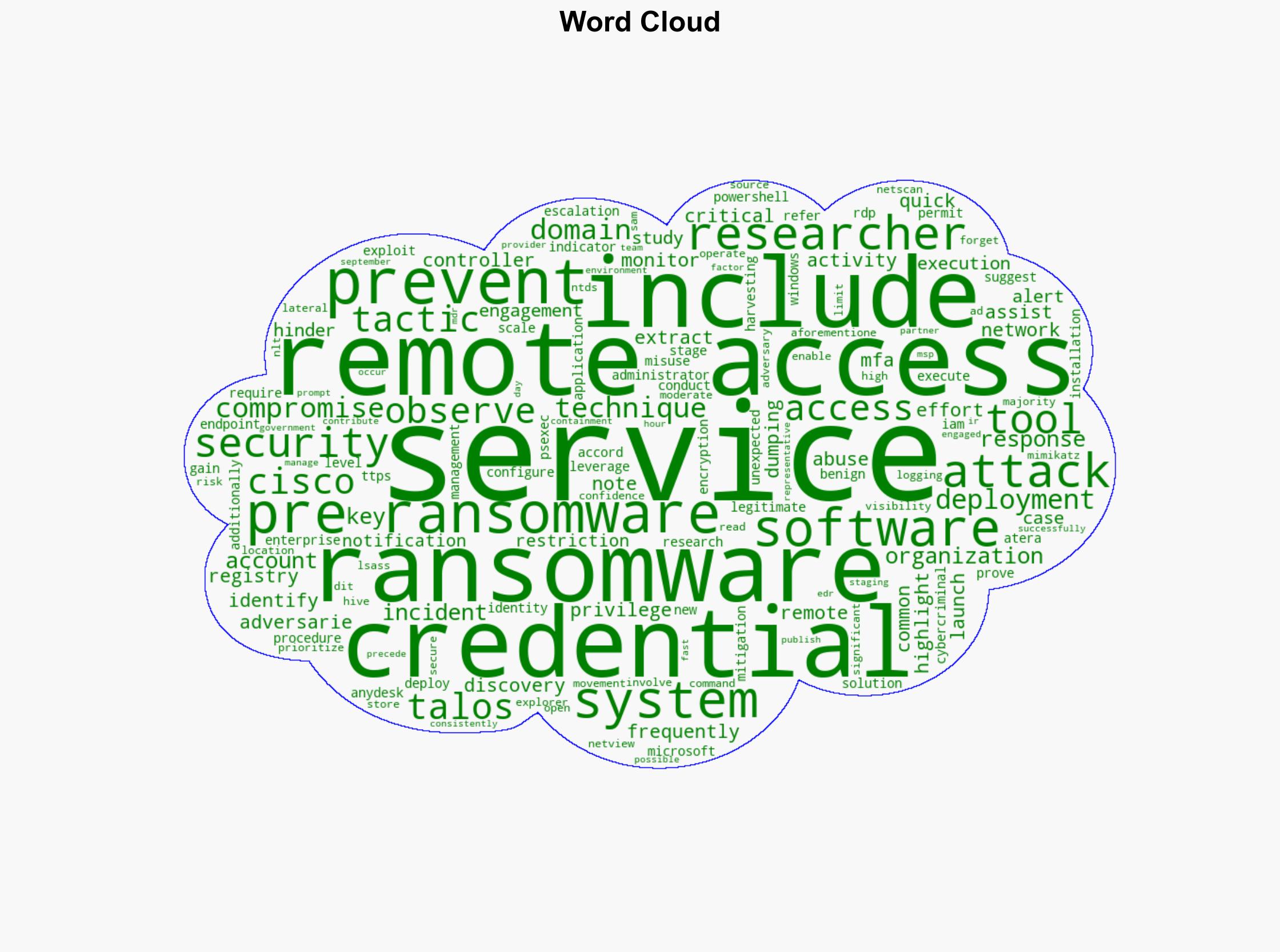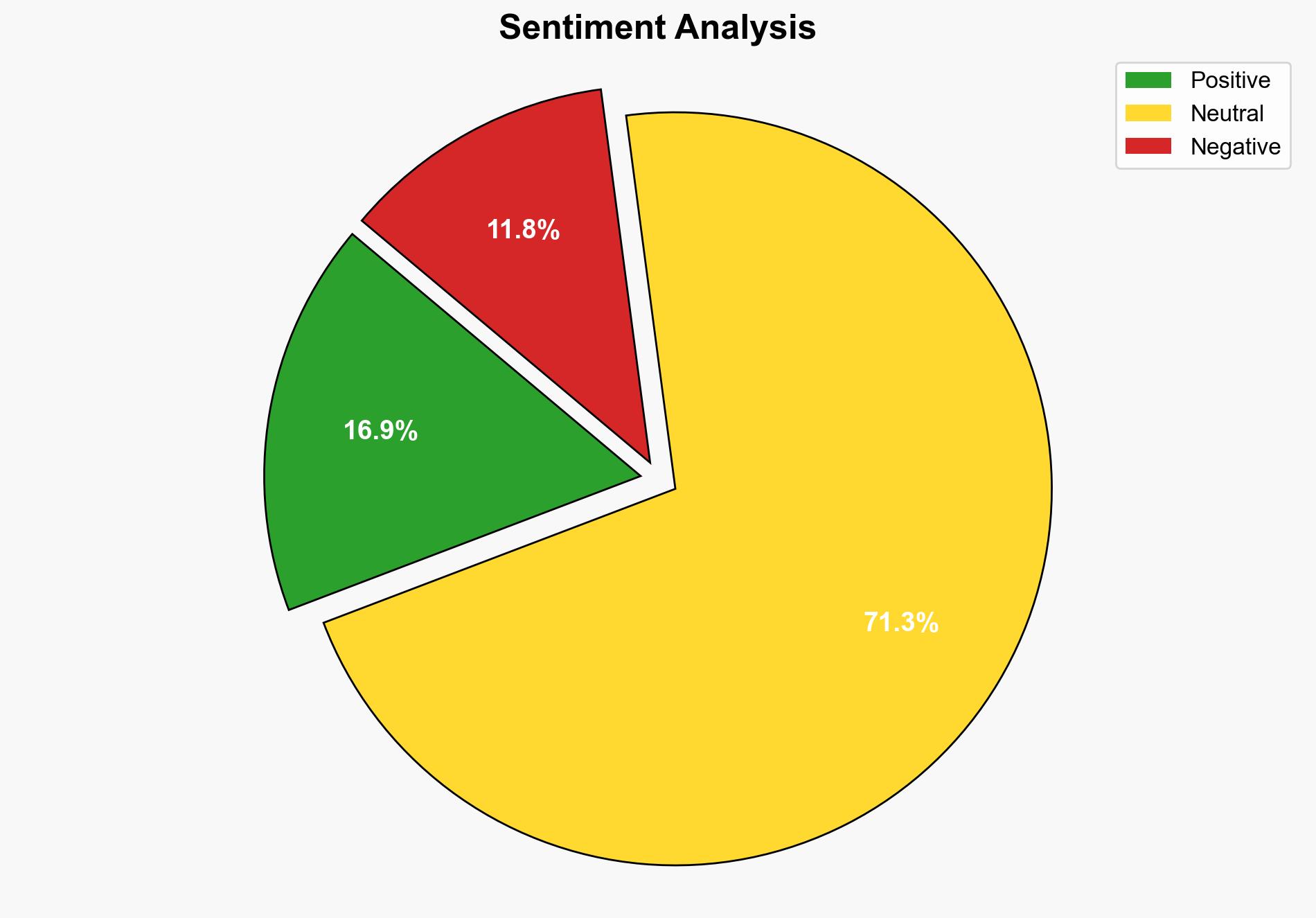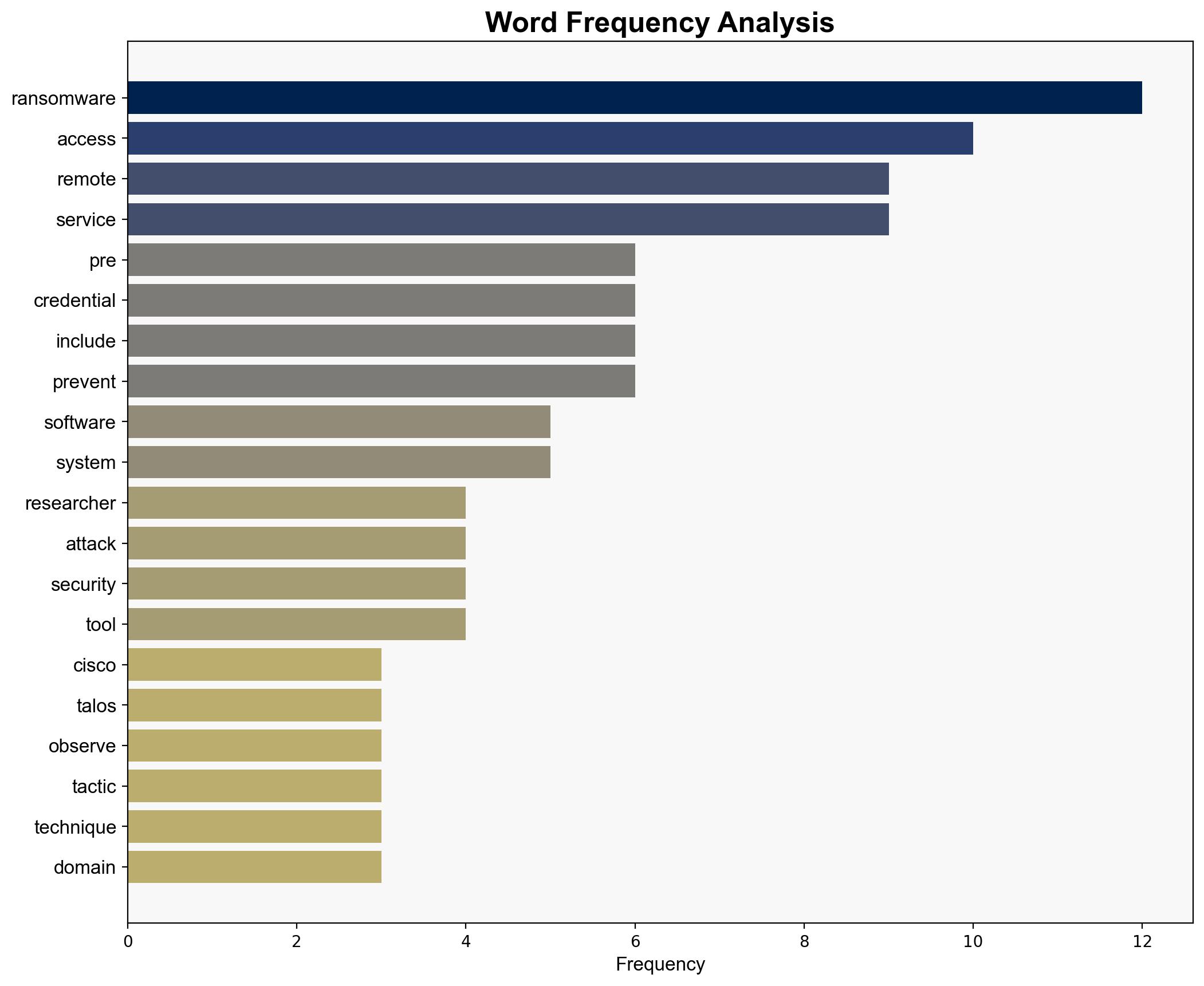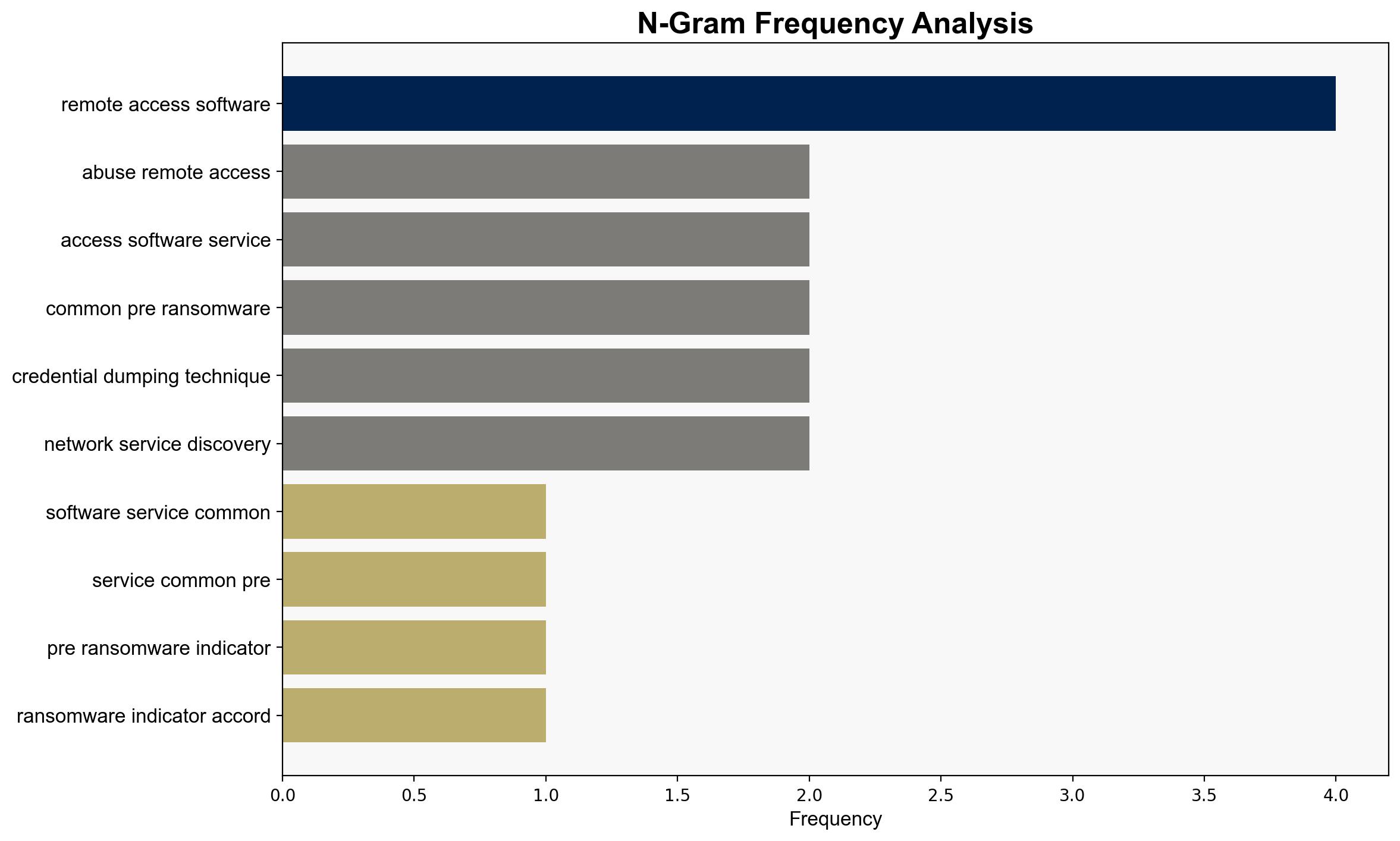Remote Access Abuse Biggest Pre-Ransomware Indicator – Infosecurity Magazine
Published on: 2025-09-08
Intelligence Report: Remote Access Abuse Biggest Pre-Ransomware Indicator – Infosecurity Magazine
1. BLUF (Bottom Line Up Front)
The most supported hypothesis is that the abuse of remote access software is a critical pre-ransomware indicator, with a high confidence level. The recommended action is to enhance security protocols around remote access tools, including the implementation of multi-factor authentication (MFA) and continuous monitoring. This report uses structured analytic techniques to evaluate the likelihood and implications of this hypothesis.
2. Competing Hypotheses
Hypothesis 1: The abuse of remote access software is the primary pre-ransomware indicator, as it allows adversaries to gain domain administrator access and execute ransomware attacks efficiently.
Hypothesis 2: The abuse of remote access software is one of several indicators, but not necessarily the primary one. Other tactics, such as credential dumping and network service discovery, may play equally significant roles in pre-ransomware activities.
Using ACH 2.0, Hypothesis 1 is better supported due to the observed frequency of remote access abuse in pre-ransomware stages and its direct link to privilege escalation and system compromise. Hypothesis 2 lacks the same level of direct evidence connecting these tactics to successful ransomware deployment.
3. Key Assumptions and Red Flags
– Assumption: Remote access software abuse directly correlates with increased ransomware risk.
– Red Flag: Potential bias in data collection, focusing heavily on remote access without equally considering other tactics.
– Blind Spot: The role of insider threats or physical security breaches in facilitating ransomware attacks.
4. Implications and Strategic Risks
The continued exploitation of remote access tools poses significant risks to enterprise security, potentially leading to widespread ransomware incidents. This could result in substantial economic losses, reputational damage, and geopolitical tensions if critical infrastructure is targeted. The psychological impact on organizations may include increased fear and uncertainty, leading to overinvestment in certain security measures while neglecting others.
5. Recommendations and Outlook
- Implement robust security measures for remote access tools, including MFA and endpoint monitoring.
- Conduct regular security audits and penetration testing to identify vulnerabilities.
- Develop a rapid incident response plan to contain potential breaches.
- Scenario Projections:
- Best Case: Enhanced security measures prevent ransomware attacks, reducing incidents by 50% within a year.
- Worst Case: Failure to address remote access vulnerabilities leads to a major ransomware attack on critical infrastructure.
- Most Likely: Incremental improvements in security reduce the frequency of successful ransomware attacks but do not eliminate the threat entirely.
6. Key Individuals and Entities
No specific individuals are mentioned in the source text. Entities involved include Cisco Talos and the Cybersecurity and Infrastructure Security Agency (CISA).
7. Thematic Tags
national security threats, cybersecurity, counter-terrorism, regional focus




